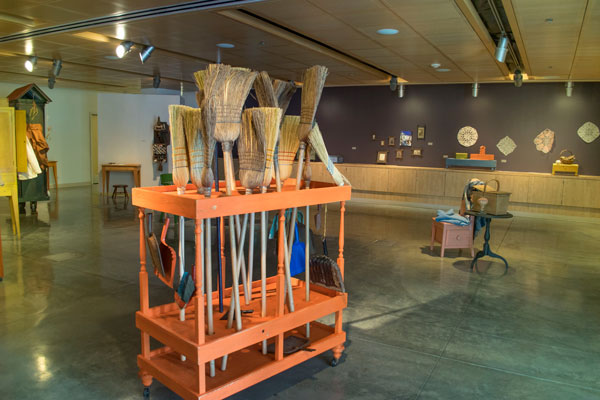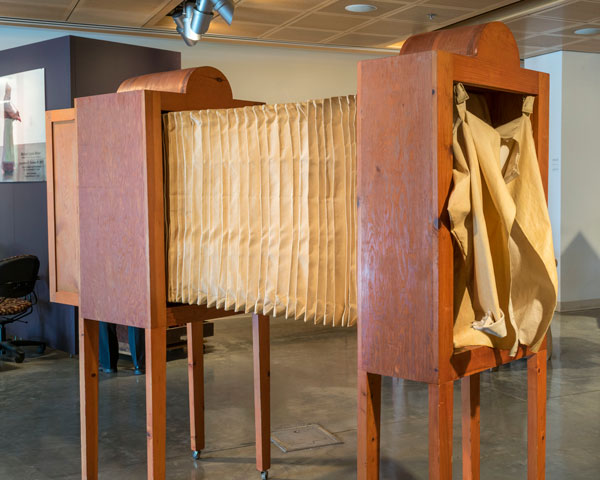Care for a pickled egg? How about a mayonnaise sandwich? Or maybe you’d prefer apple butter? With these questions and a simple spread of food with which to ply visitors, Michael Lewis Miller gently draws his audiences into his performances, which arise almost surreptitiously out of the artist’s self-effacing nonchalance and Appalachian-bred hominess and hospitality—the fact is, the performance is ongoing from the moment Miller steps into the space and begins unpacking his provisions. Broadly addressing the notion of personal identity and of the individual within a community, Miller turns his art simultaneously inward and outward, coupling personal archaeology with an exploration of familial relationships; at the same time, he invites his audience to join him in these endeavors and implicates them in the family dynamics that eventually reveal themselves.
“Michael Lewis Miller: 1989 to Present, Survey Exhibition” gathers 28 years of the artist’s sculpture, hand-stitched costumes and cabinets filled with sets of nested drawers and collections of objects, all inextricably entwined with and activated through performance. The breaking of bread and Miller’s amiable disposition and unaffected directness surmount the barrier between artist and audience, performance and life. Miller’s meandering style of narrative, which has the informality of an afternoon visit for a chat and cup of coffee with a friend, disguises the performance so that the realization of its scope dawns with revelatory power. Shifting to more formal gestures, Miller’s interactions with his audience become more theatrical and performative as he interacts with the sculptures.
Visually, his hand-crafted cabinets bear some resemblance to H. C. Westermann, and his work is likewise autobiographical. He also calls to mind Michael McMillen’s evocative sprawling collections—though Miller is pristine by comparison. But Miller’s objects are really a stage for performance and facilitate an ongoing interplay with his audience. His work reflects complementary theatricality and vulnerability, while generating a lasting hook—an unexpected draw into the emotional entanglement of family dysfunction.
Sowing (all works, 1989—present) paired with Sweep offers an example of this unfolding dynamic. Donning tartan, apron, bonnet and seed spreader, (and asking an audience member to tie the apron strings at his back), Miller sings an Appalachian plaint as he sows wheat berries around the gallery with the spreader. Removing the costume, he then begins taking brooms from a cart (Sweep) and walking up to spectators. “Will you help me sweep?” he asks. “After all, I fed you.”
And here, the cumulative weight of Miller’s performance begins to dawn. Although all unhappy families may be unhappy in their own way, at the very least, their unhappiness stirs a glimmer of recognition. Miller’s work, however, does not contain recriminatory bitterness; instead it gently—and generously—acknowledges fragility and imperfections, including his own.
In Mary’s Prosthesis, he struggles into a “straight jacket” attached to a cabinet with small casters. Thus harnessing himself, he drags the burden of his own—and his mother’s—baggage around the gallery: the effort, arduous, the cabinet lurching. And, then, he coaxes someone else into the jacket to do the same.



